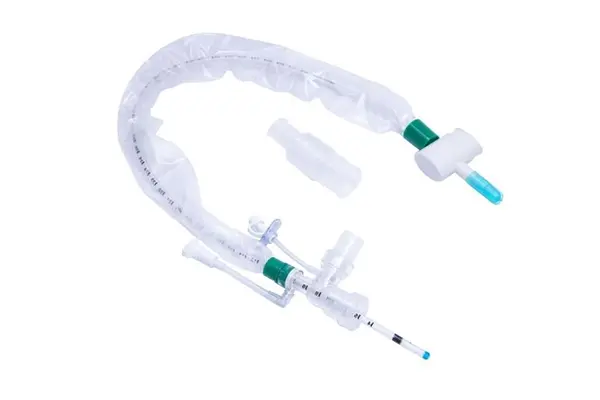Suctioning plays a crucial role in clearing mucus and secretions, but navigating the world of suction catheters can be confusing. Two types dominate the scene: open suction catheters and closed suction catheters. But what exactly sets them apart?
Unveiling the Design: Exploring the Physical Differences
Let's begin by understanding the fundamental distinction between these two types of catheters:
- Open suction catheters: These have a single lumen, meaning they have a single hollow channel for both air and secretions. Imagine a straw - that's essentially the principle behind an open suction catheter.
- Closed suction catheters: As the name suggests, these boast a double lumen, featuring two separate channels. One channel is dedicated to suction, allowing the removal of secretions. The other channel serves as an air inflow port, delivering air to the patient during the suctioning process.
Weighing the Options: Advantages and Disadvantages
Now, let's explore the advantages and disadvantages of each type to help you understand their suitability in different scenarios:
Open Suction Catheters:
Advantages:
- Simpler design: Easier to handle and manipulate due to their single lumen structure.
- Lower cost: Generally more affordable compared to closed suction catheters.
Disadvantages:
- Risk of hypoxia: During suctioning, the open catheter can inadvertently block the airway, potentially leading to a temporary lack of oxygen (hypoxia) for the patient.
- Limited control: Requires precise technique and coordination to prevent airway obstruction and ensure efficient suctioning.
Advantages:
- Reduced hypoxia risk: The dedicated air inflow channel allows for continuous air delivery, minimizing the risk of airway obstruction and hypoxia during suctioning.
- Improved control: Offers greater control over suction and air delivery, leading to more efficient and safer suctioning procedures.
Disadvantages:
- More complex design: The double lumen structure can make them slightly more challenging to handle compared to open catheters.
- Higher cost: Generally more expensive than open suction catheters.
Choosing the Right Champion: Selecting the Optimal Catheter
So, which type reigns supreme? The answer, like many things in healthcare, hinges on specific factors:
- Patient condition: For patients at high risk of hypoxia, especially those with compromised breathing, closed suction catheters are generally preferred due to their reduced risk of airway obstruction.
- Clinician skill and experience: Open suction catheters might be suitable for experienced clinicians comfortable with precise suctioning technique. However, for less experienced personnel or in critical situations, closed suction catheters offer increased safety and control.
- Procedure type: Certain procedures might require specific features or functionalities, influencing the choice between open and closed catheters.
Remember: Ultimately, the decision of which type of suction catheter to use should be made by a qualified healthcare professional based on the specific patient needs, clinical situation, and individual expertise.
Post time: 3月-04-2024






